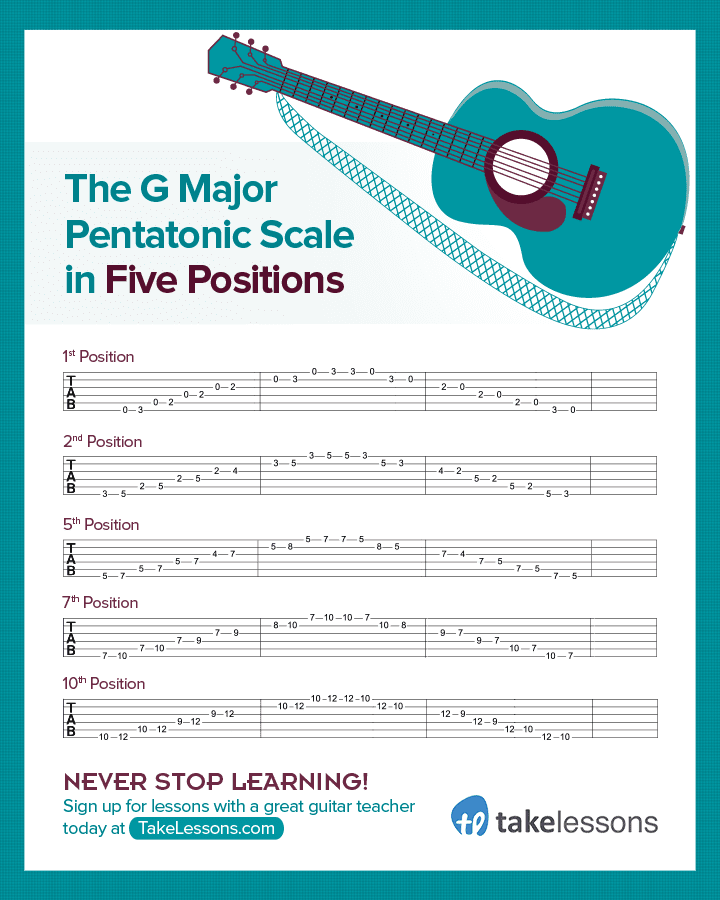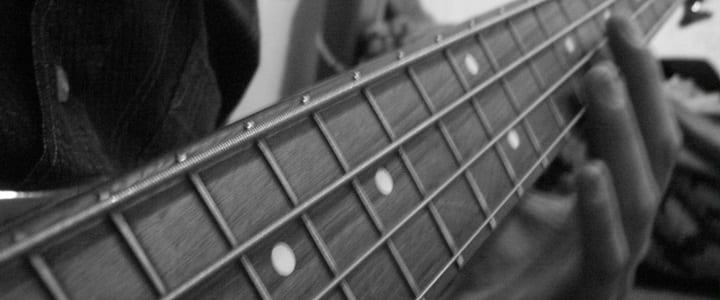 Knowing your pentatonic scales on the guitar will open up a new world of possibility when it comes to improvisation and soloing. Guitar teacher Milton J. explains why…
Knowing your pentatonic scales on the guitar will open up a new world of possibility when it comes to improvisation and soloing. Guitar teacher Milton J. explains why…
The guitar is a wonderfully rewarding instrument to play. Its versatility lends itself to a variety of melodies and chords that make the instrument welcome in many musical genres. As we find all of the wonderful ways the guitar will bring musical joy to your life, an essential part of learning the guitar is understanding the pentatonic scale and how to find it on the fretboard.
The Pentatonic scale is a musical mode made up of five notes per octave, which contrasts to the normal heptatonic, or seven-note, scale such as the major scale and minor scales we learned early on in our guitar lessons. Understanding the construction of the major pentatonic scale is made easier by using the circle of fifths. One construction takes five consecutive pitches from this circle of fifths starting on C, these being C, G, D, A, and E. Transposing, or rearranging, these pitches to fit into one octave gives us a major pentatonic scale: C, D, E, G, A.
However, most commonly used for blues and lead guitar scales would be the relative minor pentatonic scale, derived from the major pentatonic. The scale tones, or notes within the key numbered 1 through 8, would be 1, 3, 4, 5, and 7 of the natural minor scale. Using A minor as a example since it is the relative minor of C major, the notes would be A, C, D, E, and G.
With that said, the following represent the 5 main pentatonic scale shapes for guitar, which can be transposed across all minor keys.
5 Pentatonic Guitar Scale Shapes

Much like playing the piano, each finger has a purpose on the fretboard. As you read the tabs above, understand that each number corresponds with the fret and each line corresponds with the string your fingers should be placed upon (the bottom string being the low E string, and the representing the high E string). From there, your fingering should also correspond to the numbers, as each fret has a corresponding finger. When the tab calls for a skip of a fret, you also skip a finger.
In Example 3, the first two notes call for an A on fret 5 and a B on fret 7. Use your first finger to fret the note on the fifth fret. For the second note, use finger 3 (ring finger). That means your fingers numbered 1, 2, 3, and 4 correspond to the frets 5 through 8 on the guitar. Maintain this alignment as finger 1 needs to be moved across the fretboard; for example, when finger 1 acts as a barre in example 4. When practicing these pentatonic scale shapes, be sure to practice using these fingerings to build muscle memory in your left-hand fingers!
Now, it is important to note that routine practice and memorization of these five shapes will allow you to use scales effectively for your lead guitar solo lines and melodic improvisations. To understand more fully how beneficial these pentatonic scales can be for your guitar playing, now is the time to begin guitar lessons with your local TakeLessons teacher today!
Happy practicing!
 Milton J. teaches guitar, piano, singing, music recording, music theory, opera voice, songwriting, speaking voice, and acting lessons in Corona, CA. He specializes in classical, R&B, soul, pop, rock, jazz, and opera styles. Learn more about Milton here!
Milton J. teaches guitar, piano, singing, music recording, music theory, opera voice, songwriting, speaking voice, and acting lessons in Corona, CA. He specializes in classical, R&B, soul, pop, rock, jazz, and opera styles. Learn more about Milton here!
Photo by Nicolás Giorgetti
Megan L.

